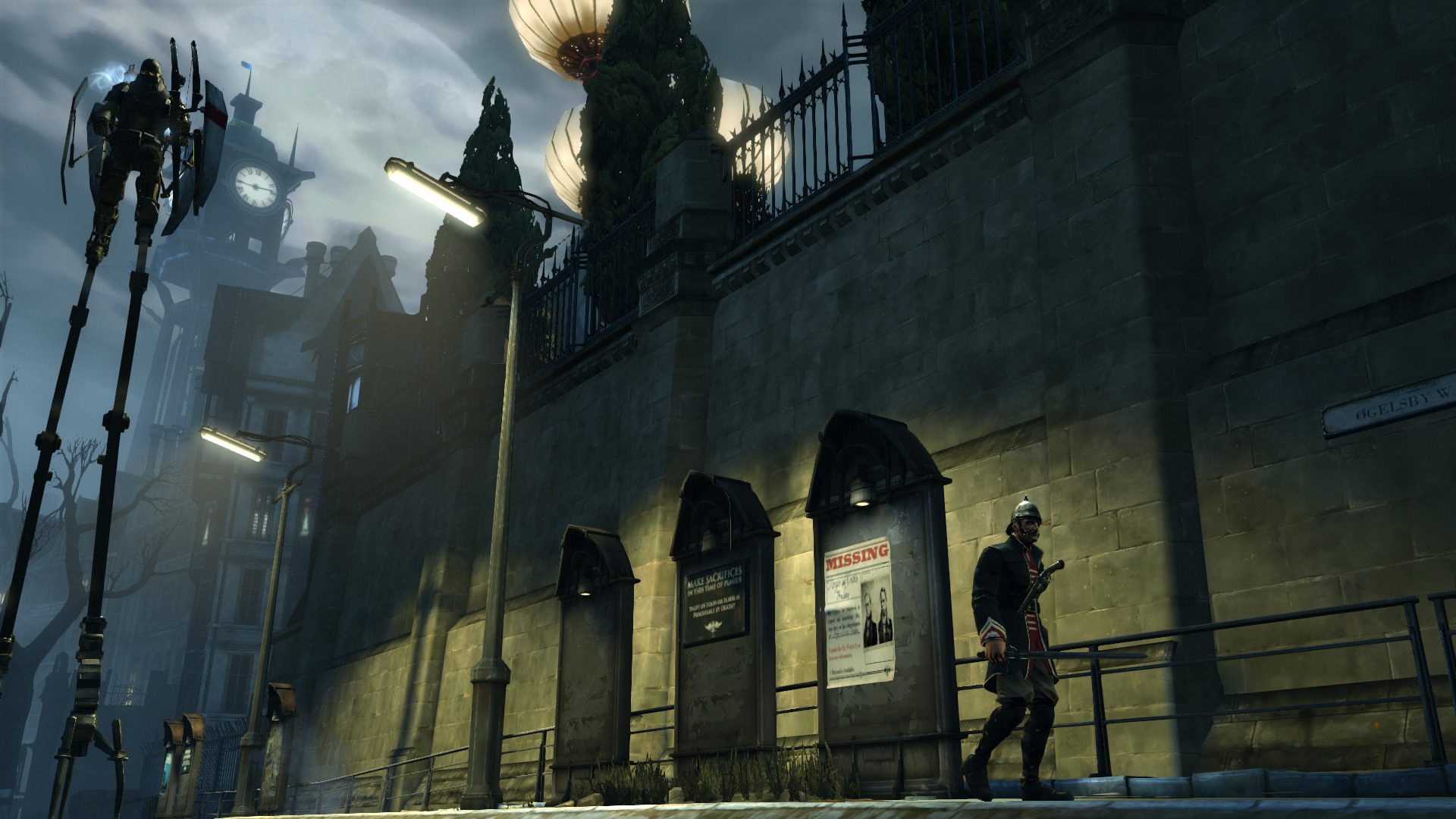Vicious, man-eating and disease-carrying rats infest the city of Dunwall, where steampunk meets supernatural in Arkane Studios’ new first-person stealth title “Dishonored.”
Aesthetically similar to industrial 19th century Britain, “Dishonored” puts players in control of Corvo Attano, Dunwall’s royal protector and the Empress’ personal bodyguard. Yet after an incurable plague breaks out across the city, Attano is framed for the murder of his empress and forced to become an assassin to regain his honor and take revenge on those who betrayed him.
While the story doesn’t get any better with time and is as sadly unoriginal as it sounds (no matter how much like “The Count of Monte Cristo” it is), “Dishonored” presents a refreshing take on the stealth and action formula by offering players multiple ways to go about reaching mission’s end.
For example, in a particular mission Attano is charged with locating his target while at a masquerade ball. While in disguise, players can snoop through the mansion collecting clues and asking other party guests for information, or players can simply break in, blade swinging, and cause mass panic. Either option will lead to the target.
Still, “Dishonored” encourages players to take the more difficult, and often less enjoyable, path by sticking to the shadows and avoiding combat when possible. The game favors choking out guards or slinking around them completely.
For those more patient players, the more inconspicuous path rewards a better Chaos level, the game’s equivalent of a grading system. This frustratingly difficult and somewhat confusing system affects future missions, with a lower Chaos level resulting in decreased enemy numbers throughout the mission and vice versa, making sneaking around Dunwall simpler or more difficult.
Attano’s gadgets, including a crossbow and something similar to a butterfly knife, along with the magical abilities gifted to him by a deity known as The Outsider, make avoiding combat more of a chore and punishment rather than a valid gameplay option. Calling on rats to devour enemies and teleporting around Dunwall using the “Blink” power are just a few of the enjoyable abilities at the player’s disposal.
After upgrading these abilities, players can also combine gadgets and powers, creating an even greater level of choice and versatility. By slowing down time, players can possess an enemy’s body and place it in front of a careening bullet. Return time to its normal flow, and the enemies have taken care of themselves. Finding new gameplay options like this are what make the game highly replayable.
Although accompanied by an excellent atmosphere and solid gameplay, the game’s story falls short and even avoids answering some important plot points. Foreseeable twists, anticlimactic endings and a masked, silent and forgettable main character do nothing to remedy this game’s unfulfilled story potential. It also doesn’t help that every supporting character, with the exception of the insanely twisted Granny Rags, is lost among the monotony of in-game text and brief cutscenes.
Though player choice within the gameplay is superb, “Dishonored” offers a less polished form of choice within dialogue options. By attempting to mimic role-playing games like “Mass Effect,” “Dishonored” has players make either “good” or “bad” choices, but these options never hold any weight and aren’t really relevant by game’s end.
Despite these problems, the smart gameplay and high replayability shine through. The mix of stealth, action and a little creativity make for a title that leaves the shadows of mediocrity for a place among other gaming greats this fall.
““ Colin Reid
Email Reid at creid@media.ucla.edu.
